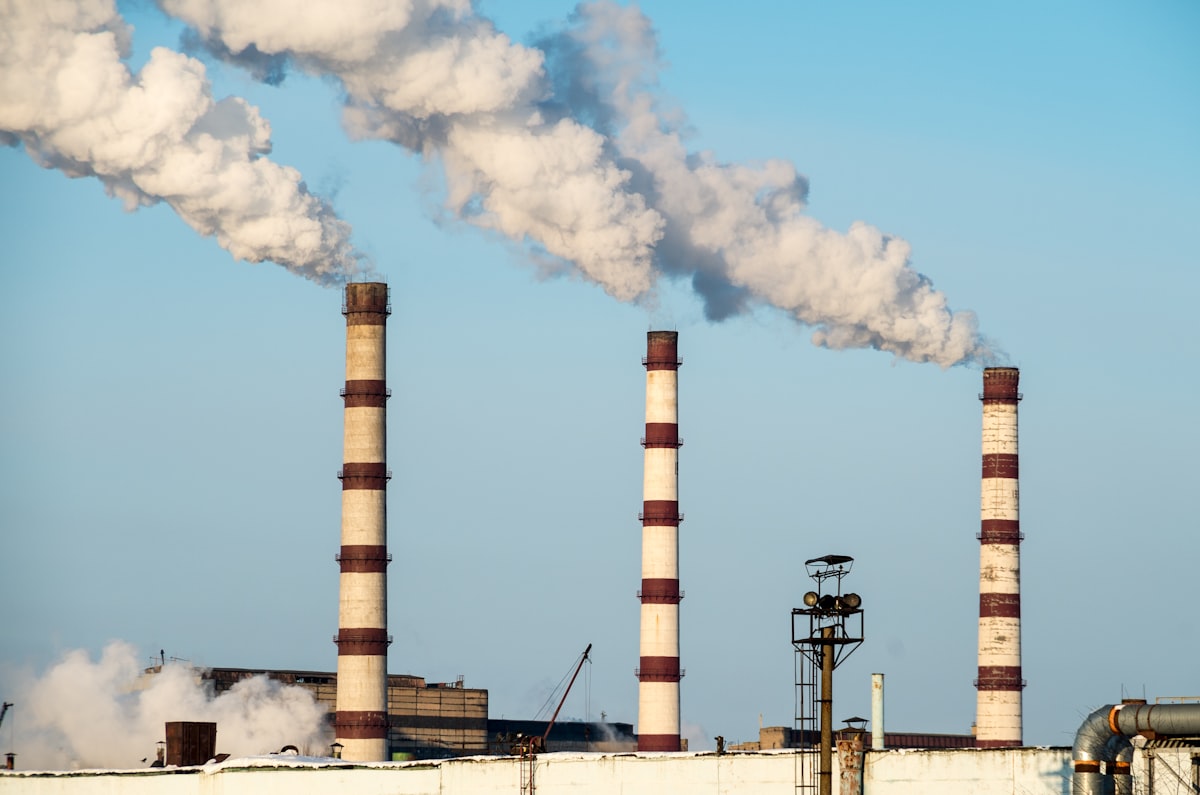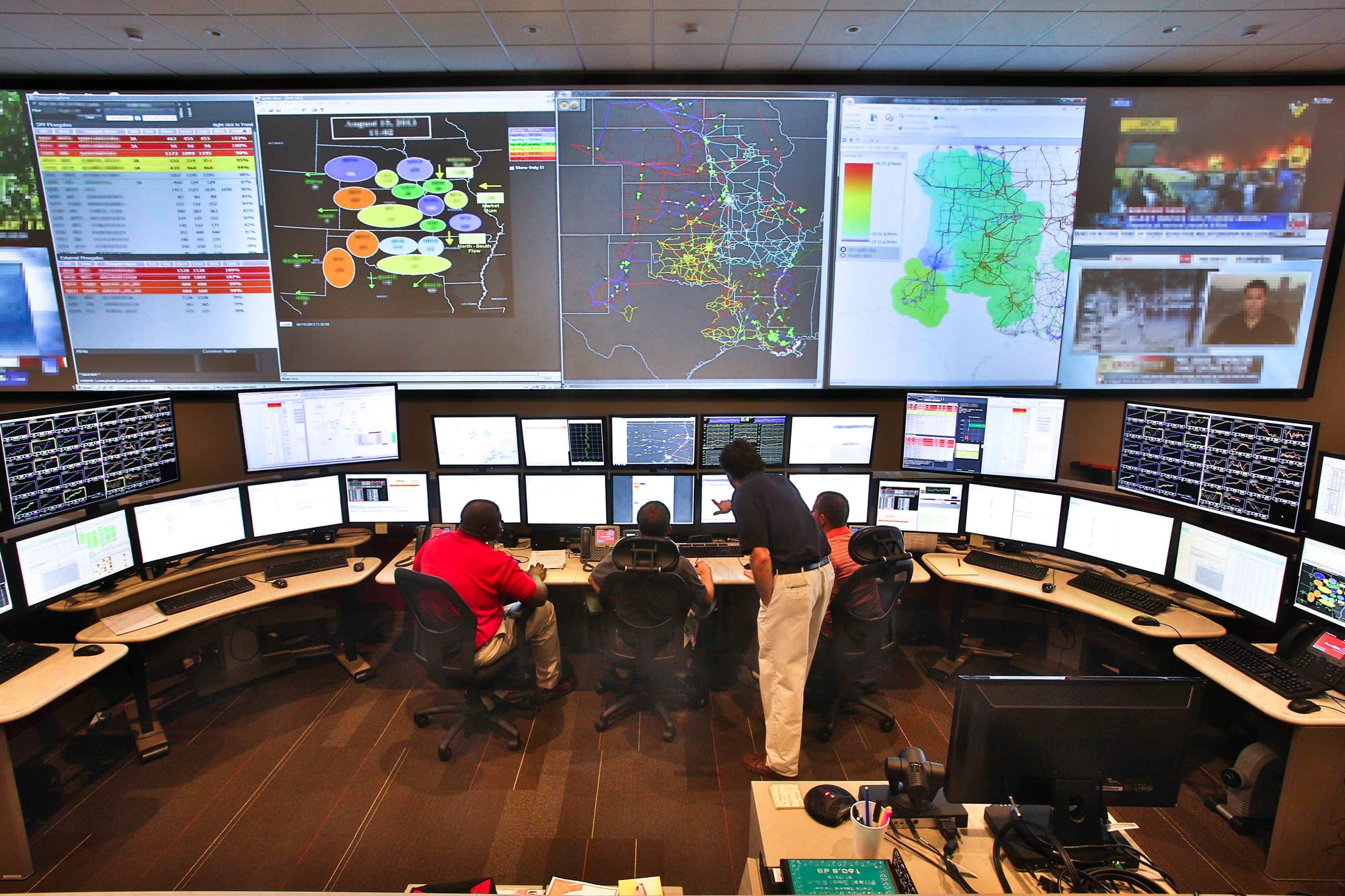
Stu Whitney/SD News Watch
SIOUX FALLS, S.D. – A political border war between South Dakota and Minnesota on how to handle tax policies, abortion and the pandemic response could spill over into renewable energy and the future of coal plants.
At issue is the pace with which gas and electric companies can transition away from fossil fuels without compromising reliability and affordability for customers, and what role government plays in those calculations.
That reliability was tested several times over the past few years, including during a winter storm in January that nearly caused rolling blackouts, one South Dakota official said.
The Democratic-controlled Minnesota Legislature passed a law in 2023 requiring all electric utilities in the state to produce only carbon-free energy by 2040 using sources like solar, wind, hydroelectric and nuclear power.
Xcel Energy, whose 3.7 million electrical customers include about 100,000 South Dakotans, is based in Minneapolis, so that law applies to the utility.
The South Dakota Public Utilities Commission, consisting of three elected Republicans, sent a letter to Xcel in January asking the company to reverse plans to close several coal-fired power plants ahead of schedule as part of its transition.
“Evidence is mounting that the premature closures … will elevate the risk of electricity outages particularly in tight load hours, including hours of extreme cold and extreme heat, as well as those hours when wind generation is low,” the letter stated. “These events are likely to pose a threat to life and property.”
The company stuck to its timetable, which includes replacing the coal plants with solar projects in the next few years, a plan approved by the Minnesota Public Utilities Commission.
Minnesota PUC commissioner: ‘Massively frustrating conversation’
More recently, members of Minnesota’s PUC clashed with utility company Otter Tail Power over its decision to amend its long-range plan to push back closures of coal plants – including Big Stone near Milbank, in northeast South Dakota – until at least 2040.
The Minnesota PUC approved Otter Tail’s Integrated Resource Plan on May 30 after concessions that included the company no longer using its North Dakota-based Coyote Station plant for Minnesota customers beyond 2031.
Otter Tail’s most recent modeling projects a retirement date of 2046 for South Dakota-based Big Stone, which started operation in 1975 and burns coal from Wyoming’s Powder River Basin.
“I just find this to be a massively frustrating conversation,” Minnesota PUC Commissioner Joe Sullivan said at the May 30 meeting . “I sympathize with Otter Tail because you have two different jurisdictions that look at the world differently. But if (Coyote Station) were in Minnesota, we’d say, ‘Otter Tail, it’s time to pull out.’”
Otter Tail, which serves about 130,000 electricity customers in Minnesota, North Dakota and South Dakota, addressed the delicate balance of transitioning to renewable energy when submitting its 2022-36 plan to state PUCs.
“Shifting the generation fleet’s focus to dispatchable gas resources and away from coal will help to improve operational flexibility while hedging market risk,” the report said. “That said, it is also necessary to ensure fuel-secure generation is available for those times when self-generation is necessary to maintain reliability of the system.”
South Dakota opposes new EPA rules
Disputes about the urgency of ditching fossil fuels for clean energy start at the federal level, where the Environmental Protection Agency (EPA) follows protocols in line with the party that controls the White House.
The EPA released new rules April 25 that elevate pollution controls for the coal industry, impacting wastewater discharge, the handling of coal ash and carbon emission limits. EPA Administrator Michael Regan, appointed by Democratic President Joe Biden, called it a “defining moment” for the agency.
South Dakota joined 22 other states in asking a federal court to review the new standards, which North Dakota Attorney General Drew Wrigley said were intentionally set “to destroy the coal industry.”

In a statement to News Watch, South Dakota Attorney General Marty Jackley referenced a recent Supreme Court decision that reversed the landmark 1984 Chevron ruling, eroding much of the power of federal agencies such as the EPA to interpret laws they administer, leaving that to the courts.
“The EPA’s directive and attack on fossil fuels is another example of a federal agency creating undue burdens on states and private businesses without proper authority while Congress does not act,” Jackley wrote. “The Supreme Court ruling in the Chevron case is aimed at addressing this type of action by the federal bureaucracy.”
SD 8th in per capita energy consumption
The Inflation Reduction Act passed by Congress and signed by Biden in 2022 included $370 billion in tax credits and other support for clean energy initiatives.
South Dakota has increased its wind energy production to 55% of in-state net power generation, a larger share than in all other states except Iowa, according to the U.S. Energy Information Administration (EIA). Other power sources include hydroelectric (29%), coal (10%), natural gas (6%), oil (0.3%) and solar (0.01%).
But South Dakota ranks eighth among U.S. states in energy consumption per capita, with 31% of households using electricity to heat their homes during frequently harsh winters.
Dependability of resources and rising energy costs are where Kristi Fiegen, chair of the South Dakota PUC, centers her concerns amid talk of climate change and reducing greenhouse gases, she told News Watch in a phone interview.
“When I talk about reliability of the grid, I want dispatchable generation of electricity for customers in South Dakota,” said Fiegen, who is up for re-election in 2024. “Non-dispatchable energy (wind and solar) is reliant on the weather. And when it’s reliant on the weather, we don’t when we turn on the lights if it’s going to be there.”
Winter storms tested the power grid
Fiegen, who was first elected to the PUC in 2011, helps regional transmission organizations (RTOs) maintain and monitor the electrical grid, which was pushed to the limit during recent winter storms that nearly caused rolling blackouts.
The 61-year-old Chancellor native holds leadership roles in the Southwest Power Pool (SPP), a nonprofit organization that manages electric transmission for parts of 14 states, including South Dakota.

South Dakota is also part of the 15-state Midcontinent Independent System Operator (MISO), which helps ensure energy distribution regardless of whether a customer uses Xcel, MidAmerican Energy, Black Hills Energy, NorthWestern Energy, Otter Tail or another utility company.
Cooperation between these and other RTOs nationally was critical during Winter Storm Gerri, which brought brutally cold air and blizzard conditions to much of the Midwest in January.
“During that storm we got 7,000 megawatts (of electricity) from the East to help us keep the lights on,” said Fiegen. “If we hadn’t gotten that, we would have shut off lights in January during the first week of (legislative) session.”
A year earlier, in December 2022, Winter Storm Elliot led MISO to declare a maximum generation event due to higher-than-expected electricity consumption and loss of production from natural gas facilities due to freezing, mainly in the South. Similar problems emerged during a 2021 winter storm that rocked Texas and shut down power.
“Since those events, we’ve devoted a lot of time to resource adequacy,” said Fiegen, who serves alongside fellow Republicans Chris Nelson and Gary Hanson on the PUC. “We believe in clean energy, but our No. 1 goal as commissioners in South Dakota is to have reliable and cost-effective electricity for our customers.”
‘It’s a life and death issue, not convenience’
Coal was replaced by natural gas as the largest energy source in the United States in 2016, with natural gas now making up 39% of electricity generation compared to 20% for coal.
Transitioning to solar and wind too quickly could impact the reliability of the electrical grid in extreme conditions, the North American Electric Reliability Corp. (NERC) stated in its 2023-24 Long-Term Reliability Assessment.
“There is a need for dialogue among a broad group of stakeholders when policies and regulations have the potential to affect future electricity (capabilities),” the study said. “Regulations that have the potential to accelerate generator retirements or restrict operations must have sufficient flexibility and provisions to support grid reliability.”

That report was cited by South Dakota’s PUC in its letter to Xcel Energy, which responded that it shares the commission’s reliability priorities and will be adding solar and wind capacity as well as dispatchable energy through nuclear and hydrogen-ready combustion turbines.
The company’s stated goal is to provide customers with “100% carbon-free electricity by 2050 and reduce carbon emissions from its operations 80% from 2005 levels by 2030.”
South Dakota PUC member Nelson told News Watch in April that there will always be a need for electric power generated by coal, natural gas or other sources that don’t let up when the weather turns still or cloudy.
“I do expect we’re going to see a pretty significant increase in the amount of solar and wind because we really need to keep a diversity of power generation sources,” Nelson said. “But there’s going to be times when the wind isn’t blowing and the sun isn’t shining, and we need to have some way to generate electricity during those times. When it’s 25 degrees below zero, you want your house to stay warm because at that point it’s a life and death issue, and not a convenience issue.”
